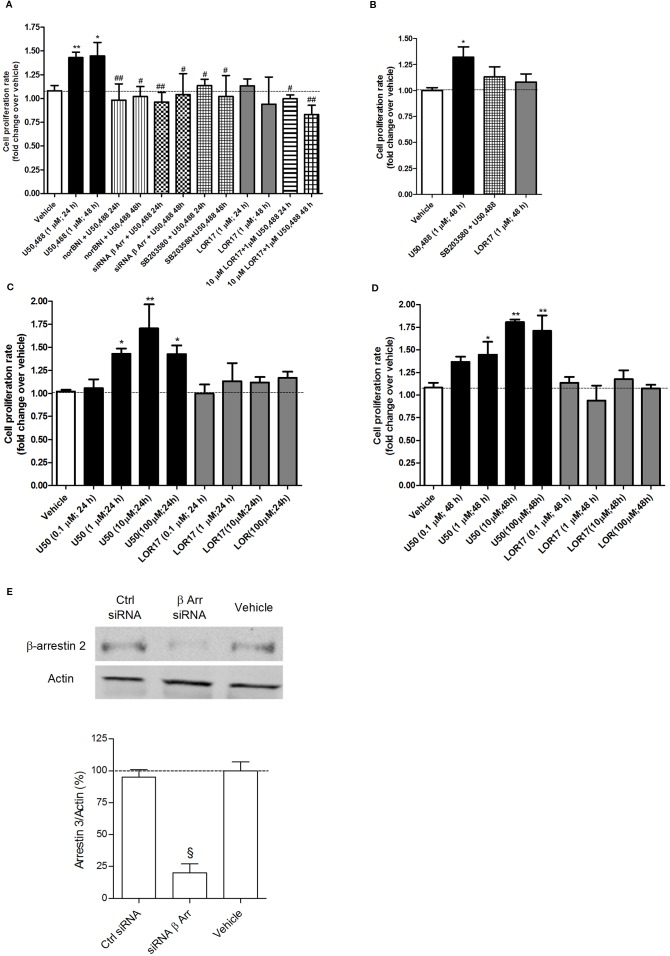Figure 6.
U50,488- and LOR17-mediated effects on cell proliferation of U87-MG human astrocytoma cells and normal human astrocytes. (A). U50,488 (1 µM) produced a KOPr-dependent, β-arrestin 2- and p38MAPK-mediated increase in the U87-MG cell proliferation rate, whereas LOR17 did not; LOR17 counteracted U50,488-mediated induction of U87-MG cell proliferation. Data are presented as the mean ± SD of 8 independent experiments. *p< 0.05 vs vehicle, LOR17 (1 µM; 24 h) and LOR17 (1 µM; 48 h); **p< 0.01 vs vehicle, LOR17 (1 µM; 24 h) and LOR17 (1 µM; 48 h); #p< 0.05 vs U50,488 (1 µM; 24 h) and U50,488 (1 µM; 48 h); ##p< 0.01 vs U50,488 (1 µM; 24 h) and U50,488 (1 µM; 48 h) (Newman-Keuls test after ANOVA). (B). U50,488 (1 µM) resulted in a p38MAPK-mediated increase in the normal human astrocyte cell proliferation rate, whereas LOR17 did not. Data are presented as the mean ± SD of 8 independent experiments. *p < 0.05 vs vehicle, LOR17 (1 µM; 48 h) and SB203580 + U50,488 (Newman-Keuls test after ANOVA). (C, D). U50,488 (0.1-100 µM) produced a concentration-dependent increase in the U87-MG cell proliferation rate at both 24 and 48 h of exposure, whereas LOR17 (0.1-100 µM) did not. Data are presented as the mean ± SD of 8 independent experiments. *p< 0.05 vs vehicle; **p < 0.01 vs vehicle (Newman-Keuls test after ANOVA). (E). Knock-down of beta-arrestin 2 expression in U87-MG cells by means of selective siRNA. Data are presented as the mean ± SD of 6 independent experiments. §p < 0.001 vs Vehicle and Ctr siRNA (Newman-Keuls test after ANOVA).

